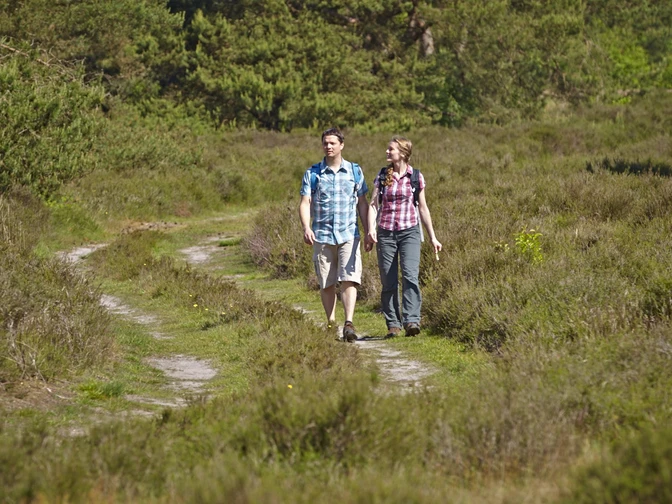One of the most impressive and important wetlands in northwest Germany is the Gildehauser Venn nature reserve, located south of Gildehaus. The total area of the nature reserve is 650 hectares. The area is criss-crossed by birch forests, moor ponds and dune ridges and is home to a wide variety of flora, which can be admired from two viewing towers.
The waters of the Gildehauser Venn are among the most botanically diverse in Lower Saxony and are home to rare plant species such as marsh St. John's wort, yellow and white dysentery, hedgehog's hose, dwarf orchid and frogweed. If you look closely at the edge of the path, you may even be lucky enough to spot one of the rare carnivorous plants, the sundew. In addition to different types of landscape such as wet heaths, remnants of raised bogs and swamp forests, the Gildehauser Venn is also home to a large number of rare bird species, such as the short-eared owl and the oriole. The Eurasian curlew, the bulrush, the moor frog and the adder also live here. If you hike the northern loop of this route, you will be rewarded with a great view from the Gildehauser Mühlenberg. Here stands the Ostmühle, a Dutch tower windmill built from Bentheim sandstone in 1749/1750.
Note: Due to its length, the hiking trail is divided into a northern and a southern route and can therefore be shortened. The northern route is signposted with yellow arrows, the southern route with red arrows.
The waters of the Gildehauser Venn are among the most botanically diverse in Lower Saxony and are home to rare plant species such as marsh St. John's wort, yellow and white dysentery, hedgehog's hose, dwarf orchid and frogweed. If you look closely at the edge of the path, you may even be lucky enough to spot one of the rare carnivorous plants, the sundew. In addition to different types of landscape such as wet heaths, remnants of raised bogs and swamp forests, the Gildehauser Venn is also home to a large number of rare bird species, such as the short-eared owl and the oriole. The Eurasian curlew, the bulrush, the moor frog and the adder also live here. If you hike the northern loop of this route, you will be rewarded with a great view from the Gildehauser Mühlenberg. Here stands the Ostmühle, a Dutch tower windmill built from Bentheim sandstone in 1749/1750.
Note: Due to its length, the hiking trail is divided into a northern and a southern route and can therefore be shortened. The northern route is signposted with yellow arrows, the southern route with red arrows.
Good to know
Best to visit
suitable
Depends on weather
License (master data)
Grafschaft Bentheim Tourismus
Nearby




